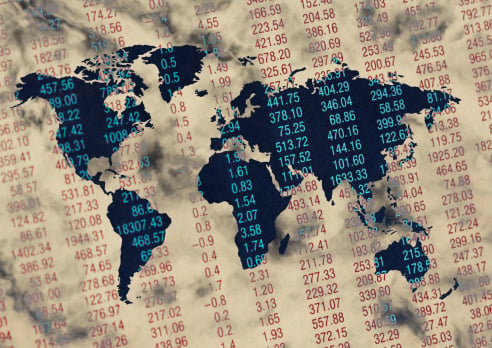In another sign that the largest engines of the world’s economy have faltered, the Organization for Economic Cooperation and Development (OECD) has slashed its forecast for global gross domestic product (GDP) for this year and for 2016. China can no longer be counted on to carry the bulk of global expansion. The U.S. consumer has had troubled hoisting the American economy. Japan and Europe may have improved expansions, but these are not much better than 1%. Source: Thinkstock
Source: Thinkstock
In the OECD’s latest Economic Outlook, the organization’s researchers report:
But the global economy can be characterised as only achieving a muddling-through “B-minus ” grade. Global growth in the first quarter of 2015 was weaker than in any quarter since the crisis. And although this softness is seen as transitory, productivity growth continues to disappoint, reflecting in part tepid business investment which has weakened the spread of new technologies.
ALSO READ: Countries With the Widest Gap Between Rich and Poor
Overall expansion is close enough to the border of contraction that there is no encouragement that the global economy has pulled completely free from the effects of the Great Recession:
The OECD sees global growth at 3.1% in 2015, rising to 3.8% in 2016. This is less than the 3.6% and 3.9% foreseen in the previous Outlook in November 2014, largely on account of the unexpected weakness seen in the first quarter of 2015. Global growth is expected to pick up through 2015 and 2016 thanks to low oil prices, widespread monetary easing and a reduction in the drag from fiscal consolidation in the major economies.
US GDP growth is projected to be 2.0% in 2015 and 2.8% in 2016, a downward revision from the November 2014 forecast of 3.1% this year and 3.0% in 2016. While the stronger dollar and adverse weather weighed on growth in early 2015, unemployment continues to fall. Supportive monetary policy and lower oil prices should continue boosting demand.
Output in the Euro area is expected to rise by 1.4% this year and 2.1% in 2016, more than forecasted in the previous Outlook, when the projections were 1.1% for 2015 and 1.7% for 2016. Bolder-than-expected monetary easing by the ECB has been accompanied by substantial depreciation of the euro, which should reinforce the positive demand effect of a pause in fiscal consolidation and the drop in oil prices.
Japanese growth is projected at 0.7% in 2015 (compared with 0.8% in the previous Outlook) and 1.4% in 2016 (1.0% previously). Lower oil prices, stronger exports reflecting the weaker yen and real wage gains are among the factors driving the recovery.
In China, the 2015 GDP growth forecast has been revised down to 6.8%, from 7.1% in the November Outlook, and to 6.7% from 6.9% for 2016. The deceleration reflects the restructuring underway in the Chinese economy as services replace manufacturing and real estate investment as the main driver of growth.
Growth in India is expected to remain strong and stable in 2015 (at 7.3%) and 2016 (7.4%). The recessions in Russia and Brazil are projected to give way to low but positive growth in 2016.The OECD sees global growth at 3.1% in 2015, rising to 3.8% in 2016. This is less than the 3.6% and 3.9% foreseen in the previous Outlook in November 2014, largely on account of the unexpected weakness seen in the first quarter of 2015. Global growth is expected to pick up through 2015 and 2016 thanks to low oil prices, widespread monetary easing and a reduction in the drag from fiscal consolidation in the major economies.
ALSO READ: The Happiest Countries in the World
A number of economists would characterize the figures for China as too aggressive, as slow expansion outside the country will blunt demand for its goods, and its middle class has not evolved into a strong consumer base. U.S. GDP was negative in the first quarter. Experts believe this will increase throughout the balance of the year, but, again, the consumer is critical to that prospect. Real wages have not improved in a decade and hover just above a median of $50,000.
The risk in the OECD outlook is on the downside. And its new revision shows the global economy is already headed that way.
Sponsored: Attention Savvy Investors: Speak to 3 Financial Experts – FREE
Ever wanted an extra set of eyes on an investment you’re considering? Now you can speak with up to 3 financial experts in your area for FREE. By simply
clicking here you can begin to match with financial professionals who can help guide you through the financial decisions you’re making. And the best part? The first conversation with them is free.
Click here to match with up to 3 financial pros who would be excited to help you make financial decisions.
Thank you for reading! Have some feedback for us?
Contact the 24/7 Wall St. editorial team.



